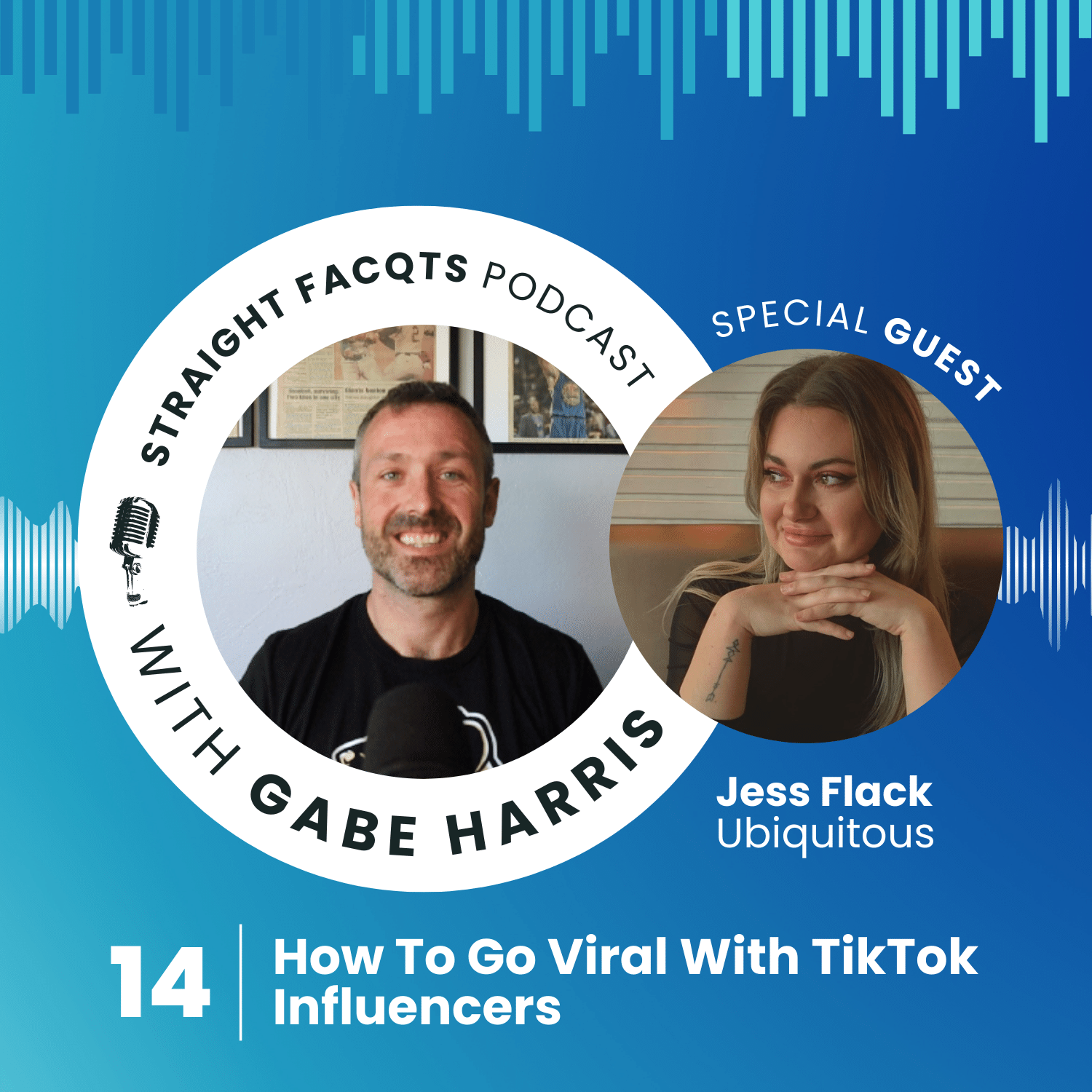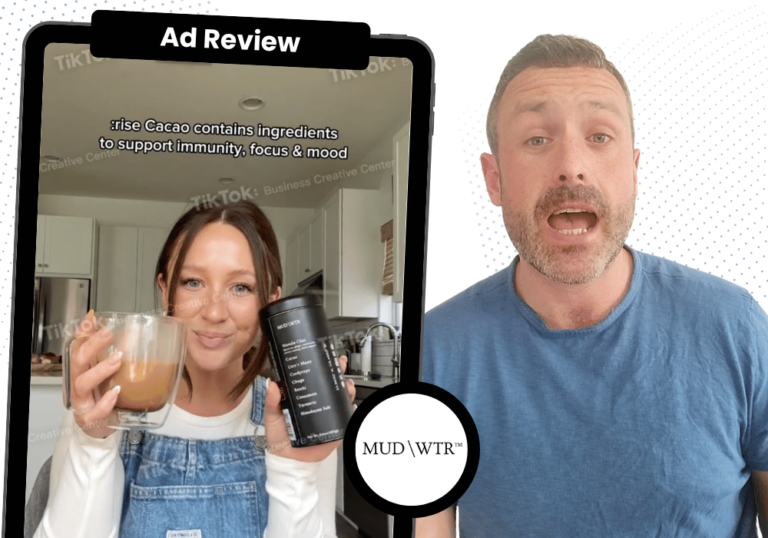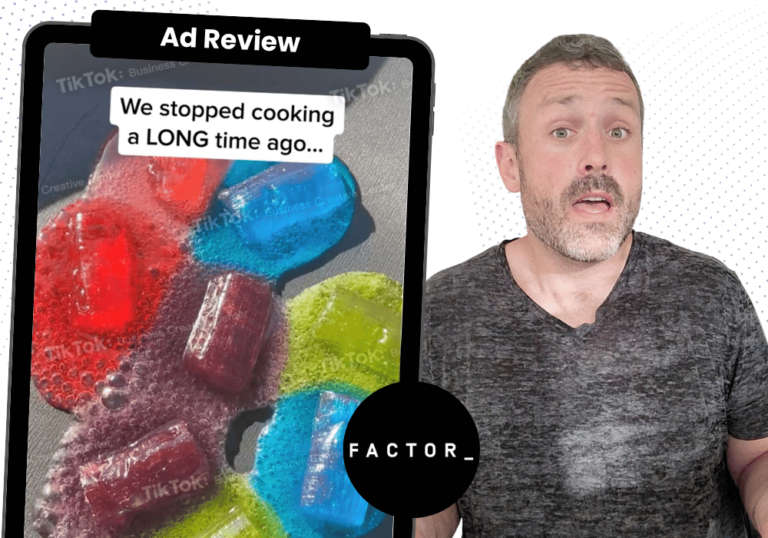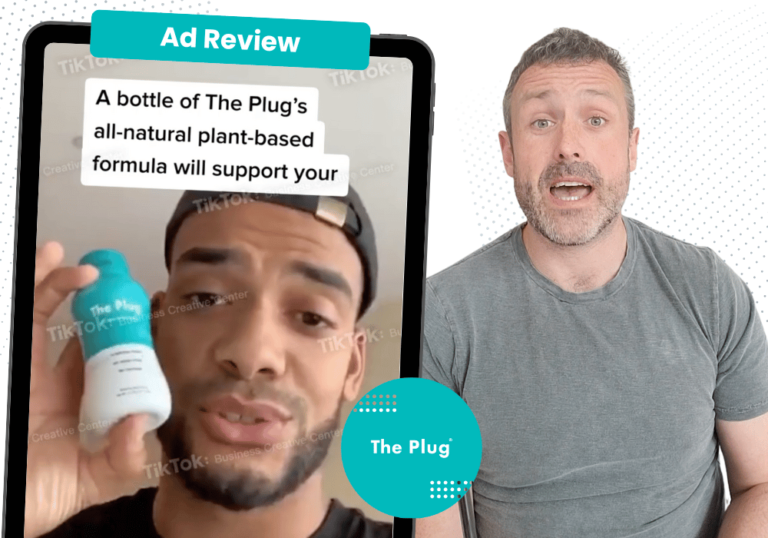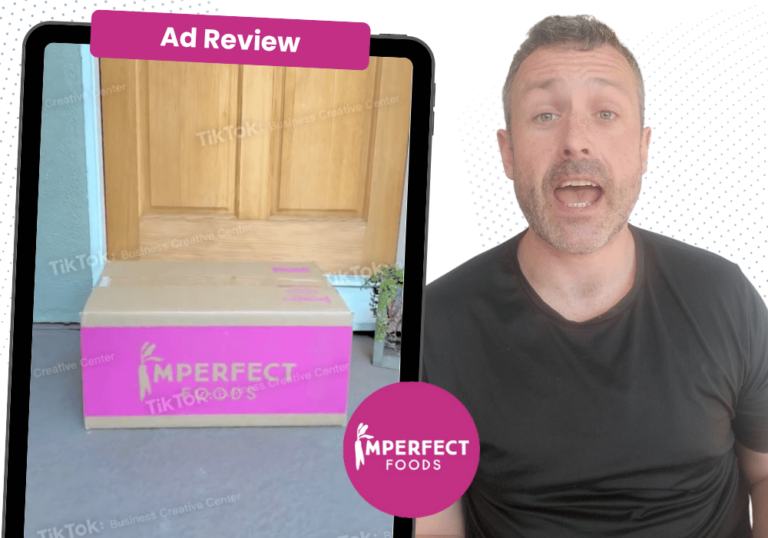On this episode of Straight Facqts, we talk to Jess Flack, CEO of Ubiquitous, an influencer marketing company and we get into the wild, wild west of TikTok influencers. Plus, how you can get that west to be one with Ubiquitous. Let’s jump right into it!
Gabe Harris:
Yeah, Jess. Excited to be able to chat today about influencer marketing. Having the opportunity to look at Ubiquitous, there is a lot of cool stuff you guys do. Especially in this market, where TikTok is just blowing up.
Jess Flack:
Gabe Harris:
Jess Flack:
But TikTok or influencer marketing as a whole, is really for any brand that’s looking to grow their brand awareness and ultimately, reduce their CAC on other performance channels as well.
When iOS 14 came out a few years ago and really hit a lot of social channels, we started to see increasing CPCs, increasing CPAs across Facebook ads and Instagram ads, and even Google ads because pixel tracking became such an issue. With the iOS 14 update, we’re not able to see as clearly at least, cross device tracking like we used to.
And so a lot of marketers, including myself, were looking at their paid channel performance and just seeing it start to plummet.
So then, it’s time for us to get creative and to start looking at these other avenues and find ways to effectively get the word out. Get your messaging out. Make a meaningful brand impression.
“I think it’s actually a really good challenge and also, an exciting new phase of marketing that we’re getting into.”
And also it gave us a new challenge of how do we view attribution in this new world? Where it’s not quite as clean and one to one as it used to be. Some might argue that it may never have been clean to start with because pixels love to cannibalize all of the conversions.
I know Facebook in particular, their pixel is definitely guilty of attributing, depending on how your attribution settings are set up, they’ll take every conversion on your website and attribute it to this one ad.
And so, I think it’s actually a really good challenge and also, an exciting new phase of marketing that we’re getting into. I think it’ll allow us all as marketers to have a little bit more fun and focus on the messaging a lot more. Rather than only viewing your data in this little silo and not seeing the bigger picture of what kind of impact am I making in the space?
Gabe Harris:
Jess Flack:
They’re not just looking at that single traffic line. They’re looking at what happens to my direct traffic whenever I turn Facebook ads off? What happens to my organic and unattributable traffic over time whenever I play with these other paid channels?
“I think the threat of not having a multi-touch attribution model is that you will start only pouring money into these low funnel, high intent channels.”
And influencer marketing is the same way. We use tracking links. You can use unique coupon codes in all of the influencer content you create. But ultimately, we’re dealing with a human on the other end of the screen and you have to analyze your own behavior.
If I’m scrolling on TikTok… Yes. I’m very guilty of “TikTok made me buy this service or this product.” And there are sometimes where I’ll buy something within the same session. But oftentimes I’m either saving that video, or liking it and coming back to it later.
Or if it’s a more expensive product, I feel safer buying those things on my computer. So I’ll go to my computer, and open it up and complete the transaction then.
And I think the threat of not having a multi-touch attribution model is that you will start only pouring money into these low funnel, high intent channels. And your brand will never grow. You just plateau and you’re always talking to the same audience who likely would’ve purchased your product anyway.
So I think it is a really exciting challenge, but a challenge nonetheless.
Gabe Harris:
Could you speak a little bit about that? About the potential reach with influencers?
Jess Flack:
So my background is in performance marketing and over COVID, I just had some extra time on my hands and was commissioned by this music label to put together their marketing strategy. So this is March/April of 2020.
“TikTok is still owning the movement on the Billboard top 100.”
So as you can imagine, TikTok is also just seeing this massive increase in U.S based users adapting to the platform. I started doing a lot of research into music marketing in general and TikTok is still owning the movement on the Billboard top 100.
So I mean if you’re an artist, if you’re a label, you have to make a splash on TikTok in order to see your single climb the charts. But I had never run a TikTok influencer marketing campaign. I had no clue where to even guess where the CPM was.
It was such a new channel that there wasn’t a lot of information that I could find online. So I had to do the work and reached out to hundreds of influencers. I mean, I got back tons and tons of quotes from them on promoting this song. And what I found that was interesting were a few things.
Number one, the rates that we were getting back. You could tell that CPM had not been standardized on TikTok yet. And a lot of these creators are also 18-year-old kids, who’d just found this stardom overnight and are now talking to these large brands and don’t even know what is CPM. There’s not a lot of education and support out there for these creators on how to set their rates.
Rates coming back all over the board. But the blended average was still a quarter of the standard going rate on Instagram. And a sixth of what it is on YouTube.
“You pay $6 million for a Super Bowl placement. You can pay $6,000 to a sizable creator on TikTok and get three times the viewership.”
So it was so interesting and exciting to think that, okay. If I deploy all of these creators and work with them, I can spend a sixth of the money that I would on some of these other channels.
And we also have the opportunity… I mean, we’re basing CPM based on their average views — that’s the metric that I was looking at, at the time — to see where the CPMs that the creators were coming back with really just have developed organically from there.
And just the opportunity as a marketer to also create really engaging, and fun, and creative content and put it out there in the wild.
There also be that opportunity to completely go viral, and really change the trajectory of your brand as a whole. It’s just a massive opportunity.
It has the power and the stickiness of what Super Bowl ads were. And still are, in a lot of ways and a lot of the freedom to be creative, but for a fraction of the cost. You pay $6 million for a Super Bowl placement. You can pay $6,000 to a sizable creator on TikTok, and get three times the viewership.
Gabe Harris:
Jess Flack:
You’re getting feedback directly in the platform. You can see how your audience is feeling about the messaging and the creative that you’re putting out there.
One of the qualitative factors that we look for on creators that we work with, beyond just their metrics and their performance is, let’s look at their comments and see if they have inside jokes with their followers, if they have a close relationship.
Because, that can also be a really… It can create a massive impact on the performance of that brand’s promotion on the creator’s page, if they’re able to interweave their brand into that community and into that lingo.
And it’s fun to see those posts go live, to see the comments roll in. To see the likes roll in. And just to see that feedback.
Which on a Super Bowl ad, you’re oftentimes waiting till the next day and seeing what happens on Twitter and seeing if it picks up. But you’re not getting that direct feedback, as soon as it goes live.
Gabe Harris:
Jess Flack:
But, anyway. We did a big campaign with them. And one of our videos, just within a matter of I think 48 hours, had racked up. Now, it’s at around 18 million views. But within the 48-hour period, it was close to 16 million views. And I mean, that was a single post. We’re not talking about the entire campaign.
And we used, I mean, close to a hundred influencers on that campaign. So just massive impressions for the brand. But just also, really engaging content.
“It also feels way more friendly, and conversational, and warm than just a straight up product review.”
In this video, it’s these two guys. They go around to campuses, and they give away different products. Or sometimes, they’ll give away cash. But basically, they just go to the campus. They don’t say a word. They just are wearing a sign that has some kind of challenge.
And the first person to participate in the challenge wins whatever the prize is. So in this case, there was a Litter Robot. They had the full machine out there. And they just had a sign that says, “First person to bring us their cat wins this robot.”
So in the video, you see all these kids from campus running around. Really funny, but engaging and cool. It leaves a good impression. But it also feels way more friendly, and conversational, and warm than just a straight up product review. Or what we think of as your typical ad format.
Gabe Harris:
Jess Flack:
One thing that we preach to brands is to not be too prescriptive whenever you’re collaborating with an influencer.
If you’re working with a creator and you send them a script, you’re going to get back formulaic content that they’re not very passionate about. It could meet the needs that you have as a brand, but you’re also not cultivating a great trusting relationship. Even with that creator.
“We really wanted the creators to actually pitch to us, how they wanted to deliver that message.”
We preach freedom with guardrails. If there’s a particular brand message… With Litter Robot, they obviously wanted people to know that, hey. We have a new model launching. So we wanted to make sure that all the content mentioned that this is the new Litter Robot 4.
But aside from that, we really wanted the creators to actually pitch to us, how they wanted to deliver that message.
Some creators would show plenty videos of their cats and make different songs. And just some really creative stuff comes back whenever you give them that freedom.
Ultimately, they know their audience better than you do. They know the platform better than you do. You as the expert on your brand, just need to communicate what’s the bare minimum that needs to be mentioned, so that we’re spending money effectively and that the message isn’t lost in the video.
But you want to have some healthy collaboration. Those are always the videos that perform the best.
So that giveaway idea was totally their idea. But we loved it. Gave them the thumbs up. And then like I said, 16 million views. 18 and counting, just within a few days.
Gabe Harris:
You have to get a reallocation for creative, you have to get creative on board. Even just the allocation for budget, for creative. It could take weeks, and weeks, and weeks in order for that to happen. But when you’re working with influencers, it’s a machine almost.
Jess Flack:
“Do a montage video of all of these creators together, into this super cut of people trying your product and put paid spin behind that.”
Put paid ad dollars behind it. Get the creative licensing from the creator and put it on your website. Do a montage video of all of these creators together, into this super cut of people trying your product and put paid spin behind that. Run a commercial.
We actually did a campaign with Walker Hayes, to promote his song “Fancy Like” last year.
And in the song, he mentions Applebee’s. Applebee’s picked up that song, put together a super cut of all these TikToks of people dancing to Walker Hayes.
They ran that as a commercial for a while. They might still be running it. But that song was a massive success. Not only for Applebee’s, they saw the opportunity. But for Walker Hayes.
I mean that song was on number one on the country Billboard top 100 for, I think it was 24 weeks straight. And I mean, it’s still charting. It’s crazy just how much power it has. But you have to use it. You have to work it.
Gabe Harris:
Jess Flack:
But honestly, COVID and I think people being in quarantine and just on their phones and watching content a lot more, it really matured the user base. That’s whenever I downloaded TikTok.
And just year over year, the 24 to 30, or the 25 to 34 age bracket is the fastest growing demo on the platform. So even if you have a product where you’re targeting millennials or Gen X, there’s a massive user base on the platform that is spending actually more time on it on average, than watching cable.
On average, people are spending just over an hour and a half on TikTok every day.
Gabe Harris:
Jess Flack:
There’s just something beautiful about the UI, the way that they built the “For You” page and the algorithm, how it serves up content that you’re really interested in. I think that’s what TikTok has done really well, that other platforms are now trying to replicate.
“Instagram has been experiencing a lot of backlash recently, for trying to replicate the TikTok “For You” page experience, by introducing content from people that you don’t follow.”
Which is that on Instagram, on YouTube… Well, I’ll speak to Instagram and Facebook. Instagram and Facebook, you’re only talking to the people that you follow. That’s the content that you see.
And actually, Instagram has been experiencing a lot of backlash recently, for trying to replicate the TikTok “For You” page experience, by introducing content from people that you don’t follow. But they’ve been getting a lot of backlash from it, because that’s not what people use Instagram for. They use it to actually stay connected to their community.
But TikTok, you land on the “For You” page when you open the app. And you just scroll from there. It’s so easy, and simple, and fast, and entertaining. And that’s something I think, that really responded well with people.
Especially because of us all being quarantined. You feel connected to people all over the world, while still feeling somewhat anonymous.
“Like how Reddit has its own culture, TikTok definitely has its own culture.”
Posting some really funny video on your own Instagram or Facebook page, can be really intimidating because you’re thinking, my mom’s going to see this. My aunt’s going to see this. This person I haven’t talked to in 15 years, is going to see this.
But on TikTok, you feel a little bit more anonymous. You can be weird and have a bit more of a personality, because there’s something about the way that people interact with each other. It’s its own little community.
And we like to talk about it as, it’s this tribe. It’s this cult of followers. And there are so many inside jokes that either people have with creators, or just with the platform as a whole.
Like how Reddit has its own culture, TikTok definitely has its own culture.
And I’d even say that it’s driving culture as a whole, at this point. It’s really at the forefront of what’s the next thing? What’s the coolest thing? Both in music, fashion, entertainment. Everything. Very powerful, kind of crazy. But cool.
Gabe Harris:
Jess Flack:
You can have those viral moments way easier on TikTok than you can on Instagram. There’s a ceiling to performance on these other platforms that TikTok just doesn’t have.
But especially for brands that are considering creating their own organic page. Do it. Be weird. Have a personality. Don’t go on there and have every video be a hard sell or a pitch.
“On TikTok, you can just have so much more fun and the possibilities are so much greater to grow a real audience and a real community.”
Duolingo, I don’t know if you’ve ever seen their TikTok page. They have the funniest page and they have a massive following. And their videos go viral all the time. I mean, I haven’t seen their finances. I haven’t seen how it’s impacted their top line. But I feel positive that it has to have increased their overall user base.
If anything, anyone who is a TikTok user, if they’re ever going to have an interest in learning another language, Duolingo is going to be the first brand to come to mind and their preferred platform, just because of how they’ve established themselves as being cool on TikTok.
You just get massive reach. And I think any marketer who started a fresh Instagram page for a brand, knows that feeling of just constantly feeling like, man… It’s like painful almost, to grow an Instagram following as a brand. Or it can be, at least.
But on TikTok, you can just have so much more fun and the possibilities are so much greater to grow a real audience and a real community.
Gabe Harris:
Jess Flack:
Gabe Harris:
Jess Flack:
I think that’s what makes the difference, is that you can tell that they’ve gotten someone internally to run their TikTok, that really has spent a lot of time with it, knows the culture, knows every trend that’s coming that’s popping off on the platform. And they don’t come off like try hards. They’re in the in-crowd for sure.
Gabe Harris:
Jess Flack:
Yeah. Just the potential makes the juice worth the squeeze in producing your own TikTok content. Either internally, putting someone in charge that’s really hungry and creative that you already have on staff to really own and manage that channel, or partnering with an agency, or a company like us.
Now, we don’t do organic management. So we don’t offer someone to reply to comments and on the management of a channel. But we definitely produce organic TikTok content for brands all the time by utilizing creators, having them create the content. Then we deliver that to the brand. And then they put it onto their content calendar and shoot it out into the wild.
Yeah. A lot of different ways you can get that content produced. But ultimately, you got to take some big swings. And just test and try, and iterate, and optimize just like any other channel. But it is an especially fun one to play with.
Gabe Harris:
Jess Flack:
Definitely reach out to me. Reach out to our team. We offer full, end to end influencer marketing management.
So we work with TikTok, Instagram, YouTube. TikTok definitely being our bread and butter as you can see from this conversation. It’s definitely our focus but we work with all sorts of platforms.
We love partnering with brands, and working with them on a deep capacity. So whether you’re looking for influencers to promote your product or service for you, or you’re looking for creators to create content that you can use on your website or on your organic channels, definitely reach out to us. We’d love to partner with you!
Gabe Harris:
Jess Flack:
Gabe Harris:
Thanks for listening to our podcast on TikTok influencer marketing with Jess Flack!
Watch the video here:

